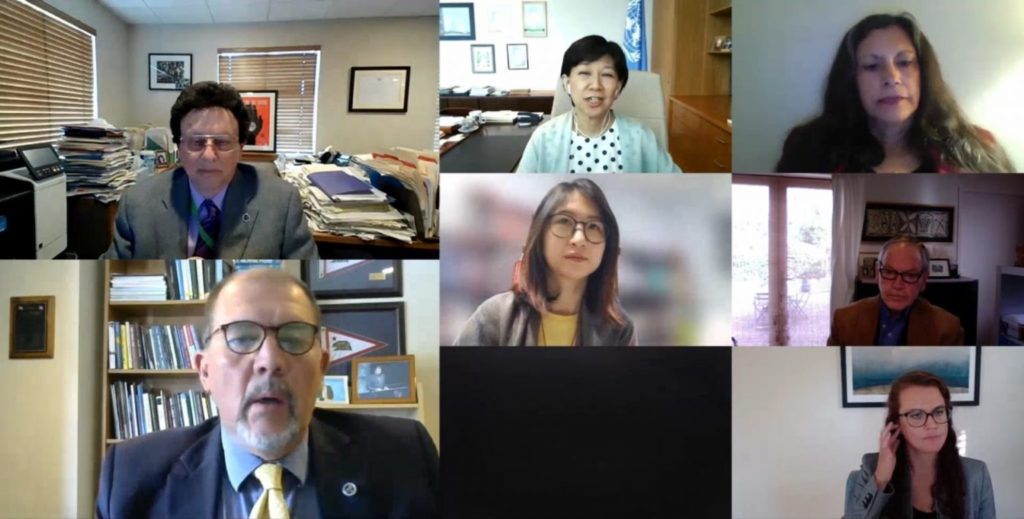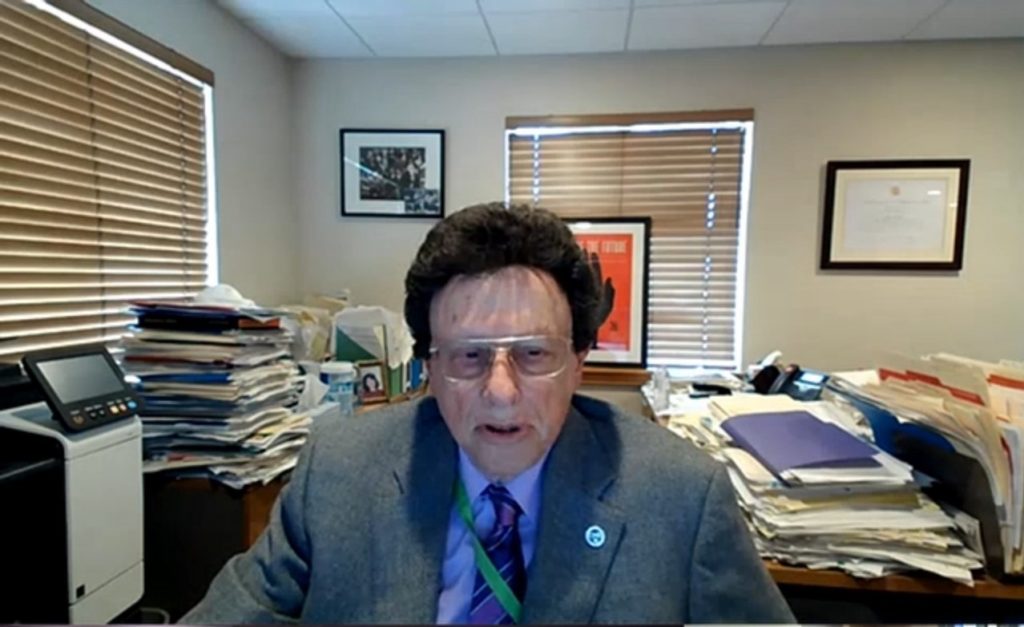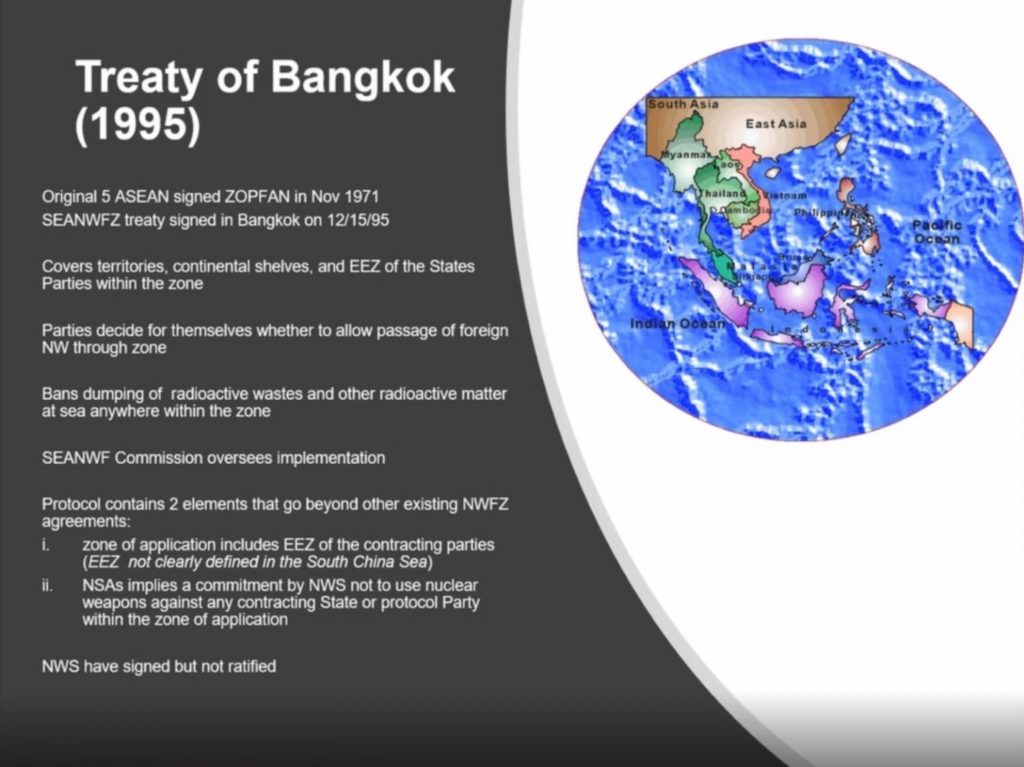September 24, 2021
On 31 August 2021, the Office for Disarmament Affairs and the James Martin Center for Nonproliferation Studies (Monterey) held a virtual event to discuss existing challenges surrounding the Protocol to the Southeast Asia Nuclear-Weapon-Free Zone, also known as “the Treaty of Bangkok”.

The panelists discuss complexities surrounding the SEANWFZ Treaty and its Protocol as well as connections to global and regional security.
The webinar took place as part of the implementation of Action 5 of the United Nations Secretary-General’s Agenda for Disarmament: Securing Our Common Future, which aims to strengthen and consolidate nuclear-weapon-free zones (NWFZ), including by facilitating enhanced cooperation between existing zones and encouraging nuclear-weapon States to adhere to the relevant protocols to the treaties establishing such zones.
The event was opened by the High Representative for Disarmament Affairs Ms. Izumi Nakamitsu and Dr. William Potter, the Founding Director of the James Martin Center for Nonproliferation studies. The event involved an interactive discussion amongst experts, moderated by Mr. Jean du Preez, Senior Program Manager for Education and Training at James Martin Center for Nonproliferation Studies, and ended with a Q&A session.
Watch the Webinar Video
Key Points
The key points that the experts raised included the following:
Mr. Tim Caughley, non-resident Senior Fellow of the United Nations Institute for Disarmament Research, noted that a possible way to move forward in completing the formalization of the SEANWFZ Treaty could be to explore mutually acceptable reservations to the Protocol between the nuclear-weapon States (NWS) and the States Parties to the Bangkok Treaty.
Dr. Elizabeth Mendenhall, Assistant Professor, Department of Marine Affairs and Political Science at the University of Rhode Island, questioned the benefits of including exclusive economic zones (EEZ) and continental shelves into the zone, linking this issue to the ongoing disagreements over interpretations of certain basic provisions of the United Nations Convention on the Law of the Sea (UNCLOS).
Dr. Marianne Hanson, Associate Professor, School of Political Science and International Studies, University of Queensland, and Senior member of the Asia-Pacific Leadership Network (APLN) pointed to the general positive shift in relations between ASEAN and China over the last decade, indicating the possibility of resolving outstanding differences related to the South China Sea delimitation process.
Dr. Chiew-Ping Hoo, Senior Lecturer, Strategic Studies and International Relations Program of the National University of Malaysia, highlighted how the collective voice of the non-nuclear-weapon States (NNWS) could help discussions around the SEANWFZ by enabling new approaches in international norm setting.
On the question of how regional complexities and the general political context surrounding the SEANWFZ Treaty impacted its implementation, speakers noted the increasing interest from major powers, including China and United States, to maritime routes in the region and the ongoing delimitation process in the South China Sea as major contributing factors. These challenges are also exacerbated by various and often divergent interpretations of the principles of freedom of navigation, innocent passage, transit of ships and other aspects of maritime behaviour.
The experts also discussed the main concerns and challenges related to signing and ratifying the Protocol by nuclear-weapon States and the potential ramifications for the Treaty’s effectiveness if reservations by the NWS were accepted. In this connection, they noted that the legal provisions of the Bangkok Treaty placed more legal obligations on NWS than the other nuclear-weapon-free zones. In order to find common ground, one suggested option was to find a compromise with mutually acceptable reservations. The issue of the relationship between ASEAN and the broader position of the Non-Aligned Movement (NAM) on the unacceptability of reservations was also cited a possible stumbling block. However, speakers agreed that UNCLOS and the International Seabed Treaty compensated for some elements of the Treaty that could potentially be weakened by reservations to the Protocol.
In discussing the utility and prospects of the existing dialogue between ASEAN and NWS, speakers noted that the latter had different levels of reliance on the sea-based leg of their nuclear programmes and that they also shared a different set of interpretations of UNCLOS.

Dr. William Potter points out some additional complexities of SEANWFZ Treaty in the context of the broader disarmament movement
Flexible approaches are needed, speakers concluded, even if it means deviating from the ‘ideal model’ of a nuclear-weapon-free zone. This could also facilitate discussions on other zones in the future, including in the Middle East. Speakers noted the growing frustration at NWS’ failure to meet their disarmament commitments and, in some cases, the reversal of past gains. In this context, they said that the ratification of the Protocol by NWS would provide an excellent way to demonstrate the NWS’ commitment to disarmament.
During the subsequent Q&A session, the audience raised questions related to the unrealized potential of the nearly 115 States that comprise NWFZ membership and the absence of a common advocacy tool; the level of safety and security in the region under the current status quo; and what could be done by ASEAN States to expedite the signing and ratification of the Protocols.

